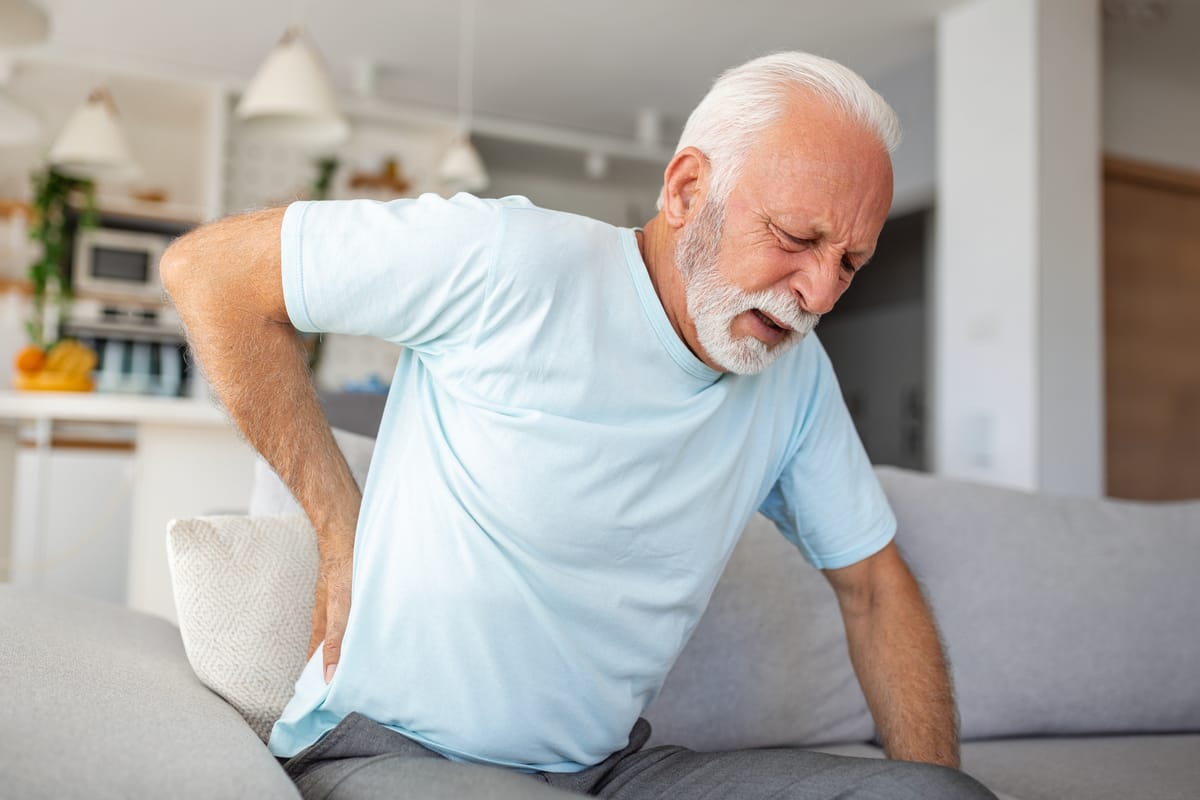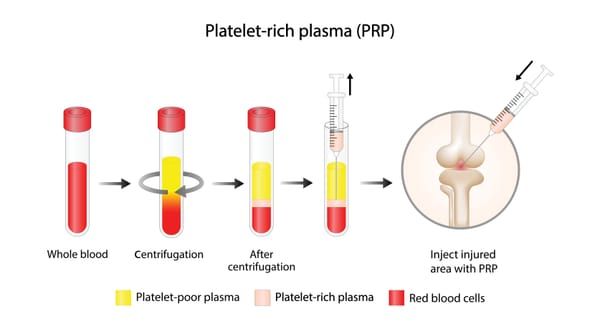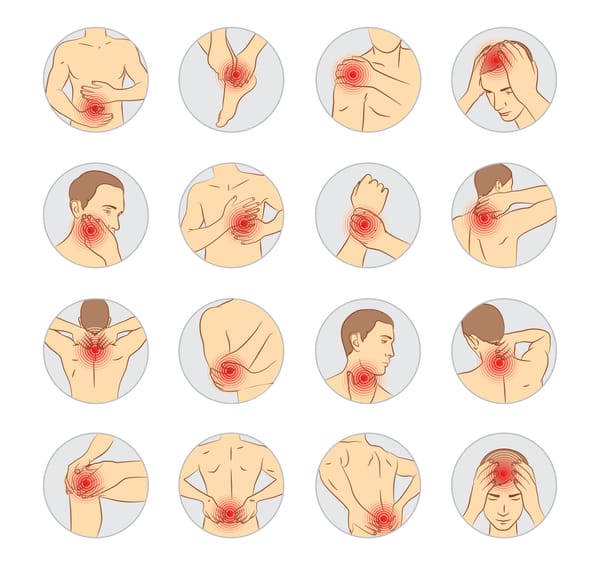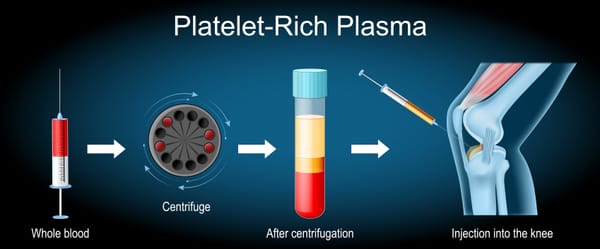Lumbar Spinal Canal Stenosis and Spinal Claudication: Understanding the Pain and Finding Relief

Lumbar spinal canal stenosis is a common condition that can cause significant discomfort and limit mobility, particularly as we age. One of its hallmark symptoms, spinal claudication, can make walking or standing feel like an uphill battle. Understanding the connection between lumbar spinal stenosis and spinal claudication is key to managing symptoms and improving quality of life. In this blog post, we’ll explore what lumbar spinal canal stenosis is, how it leads to spinal claudication, its symptoms, causes, and treatment options, all explained clearly for a general audience.
What is Lumbar Spinal Canal Stenosis?
Lumbar spinal canal stenosis is a narrowing of the spinal canal in the lower back (lumbar spine), which houses the spinal cord and nerve roots. This narrowing can compress the nerves, leading to pain, numbness, or weakness. The lumbar spine, consisting of five vertebrae (L1-L5), supports much of the body’s weight and enables movements like bending and twisting, making it prone to wear and tear.When the spinal canal narrows, it can pinch the nerve roots, particularly those forming the cauda equina (a bundle of nerves at the base of the spinal cord). This compression often leads to spinal claudication, a condition characterized by pain or discomfort in the legs triggered by activity.
What is Spinal Claudication?
Spinal claudication, also called neurogenic claudication, is a symptom of lumbar spinal stenosis where nerve compression causes pain, cramping, or weakness in the legs, especially during walking or standing. Unlike vascular claudication (caused by poor blood flow), spinal claudication results from nerve irritation and is relieved by sitting, leaning forward, or resting, as these positions open the spinal canal slightly.Spinal claudication affects 60-70% of patients with significant lumbar spinal stenosis, per a 2020 study in The Spine Journal, and is most common in people over 60, though younger individuals with certain conditions can also be affected.
Causes of Lumbar Spinal Canal Stenosis
Lumbar spinal stenosis develops when the spinal canal narrows, often due to age-related changes or other factors. Common causes include:
- Degenerative Disc Disease: Discs between vertebrae wear out, reducing space and contributing to stenosis.
- Osteoarthritis: Bone spurs (osteophytes) form on the vertebrae, narrowing the canal.
- Thickened Ligaments: The ligamentum flavum, which supports the spine, can thicken with age, compressing nerves.
- Herniated Discs: Bulging discs can protrude into the spinal canal, pinching nerves.
- Spondylolisthesis: A vertebra slips forward, narrowing the canal.
- Congenital Factors: Some people are born with a naturally narrow spinal canal.
- Other Causes: Trauma, tumors, or conditions like Paget’s disease can also contribute.
These changes reduce the space for nerves, leading to compression and symptoms like spinal claudication.
Symptoms of Spinal Claudication
Spinal claudication is distinct from other back pain conditions due to its activity-related nature. Common symptoms include:
- Leg Pain or Cramping: Aching, burning, or cramping in the buttocks, thighs, or calves, often bilateral but sometimes one-sided.
- Numbness or Tingling: Sensations of pins and needles in the legs or feet.
- Weakness: Legs may feel heavy or weak, making walking difficult.
- Activity-Triggered Symptoms: Pain worsens with walking, standing, or maintaining an upright posture, often limiting walking distance (e.g., needing to stop after a few minutes).
- Relief with Rest or Flexion: Symptoms ease when sitting, leaning forward (e.g., over a shopping cart), or lying down, as these positions reduce nerve compression.
Unlike sciatica, which often involves sharp, radiating pain from a single nerve root, spinal claudication tends to cause diffuse leg symptoms. Symptoms may develop gradually and worsen over time.
Diagnosing Lumbar Spinal Stenosis and Spinal Claudication
Diagnosing lumbar spinal stenosis and spinal claudication involves a thorough evaluation by a healthcare provider, often a neurologist, orthopedist, or spine specialist:
- Medical History: Discussing symptoms, their onset, and triggers (e.g., walking vs. resting), along with any history of back issues or conditions like diabetes.
- Physical Exam: Testing leg strength, reflexes, and sensation, and observing gait or posture (e.g., relief when leaning forward).
- Imaging:
- MRI: The gold standard to visualize spinal canal narrowing, disc herniation, or Modic changes.
- CT Scan: Used if MRI is not possible, to assess bone spurs or structural issues.
- X-rays: To check for spondylolisthesis or arthritis.
- Electrodiagnostic Tests: Electromyography (EMG) or nerve conduction studies to evaluate nerve function.
A 2021 study in Journal of Orthopaedic & Sports Physical Therapy noted that combining clinical symptoms (e.g., pain relieved by sitting) with MRI evidence of stenosis improves diagnostic accuracy by 80-90%.
Treatment Options for Spinal Claudication
Managing lumbar spinal stenosis and spinal claudication aims to relieve nerve compression, reduce pain, and improve mobility.
Treatment ranges from conservative to surgical approaches, depending on severity.
1. Conservative Treatments
- Physical Therapy: Exercises to strengthen core muscles, improve posture, and maintain spinal flexibility. Flexion-based exercises (e.g., bending forward) often help.
- Medications:
- NSAIDs (e.g., ibuprofen) for inflammation and pain.
- Neuropathic drugs (e.g., gabapentin) for nerve-related symptoms.
- Muscle relaxants for spasms.
- Lifestyle Changes: Weight management to reduce spinal stress, ergonomic adjustments, and avoiding prolonged standing.
- Epidural Steroid Injections: Ultrasound- or fluoroscopy-guided injections to reduce inflammation around compressed nerves, providing temporary relief for 50-70% of patients, per a 2020 study in Pain Medicine.
2. Interventional Procedures
- Minimally Invasive Lumbar Decompression (MILD)
- Interspinous Spacers: Minimally invasive devices placed between vertebrae to open the spinal canal, reducing nerve compression.
3. Surgical Treatments
- Laminectomy: Removes part of the vertebra (lamina) to widen the spinal canal, relieving nerve pressure. Effective for 70-80% of patients, per a 2019 study in Spine.
- Spinal Fusion: Stabilizes the spine by fusing vertebrae, often used for spondylolisthesis.
- Minimally Invasive Surgery: Techniques like endoscopic decompression reduce recovery time compared to traditional surgery.
4. Complementary Therapies
- Acupuncture: May reduce pain perception, with some studies showing benefits for neuropathic symptoms.
- Chiropractic Care: Gentle adjustments for some patients, though caution is needed with stenosis.
- Psychological Support: Cognitive-behavioral therapy or mindfulness to manage pain’s emotional impact.
A 2021 review in Global Spine Journal found that conservative treatments improve symptoms in 50-60% of mild to moderate cases, while surgery is more effective for severe stenosis with significant claudication.
Living with Spinal Claudication
Spinal claudication can feel limiting, making walks or standing tasks challenging. However, many patients find relief with the right treatment plan. Keep a symptom diary to track pain triggers and share details with your healthcare team to guide treatment. Support groups, through organizations like Spine-Health (spine-health.com) or the North American Spine Society (spine.org), or online platforms like Reddit, offer a space to connect with others and share coping strategies.
Emotional support is crucial, as chronic pain can lead to frustration or depression. Lean on counselors, family, or friends for encouragement. Practical steps, like using a cane, sitting frequently, or practicing flexion-based stretches, can help manage symptoms.
Why Awareness Matters
Lumbar spinal stenosis affects 8-11% of adults over 50, with spinal claudication being a leading cause of disability in this group, per a 2020 study in Osteoarthritis and Cartilage. Yet, it’s often misdiagnosed as arthritis or vascular issues, delaying treatment. Raising awareness ensures patients receive accurate diagnoses and timely interventions, improving outcomes.
If you’re experiencing leg pain or weakness with walking, talk to a specialist about whether lumbar spinal stenosis could be the cause. Resources like Spine-Health or the American Academy of Orthopaedic Surgeons (aaos.org) offer valuable information and support.
By understanding lumbar spinal stenosis and spinal claudication, we can empower those affected to seek relief and reclaim their mobility. Let’s keep the conversation going—no one should face this pain alone.
Disclaimer: This blog post is for informational purposes only and not a substitute for professional medical advice. Consult a healthcare provider for diagnosis and treatment of lumbar spinal stenosis or spinal claudication.



